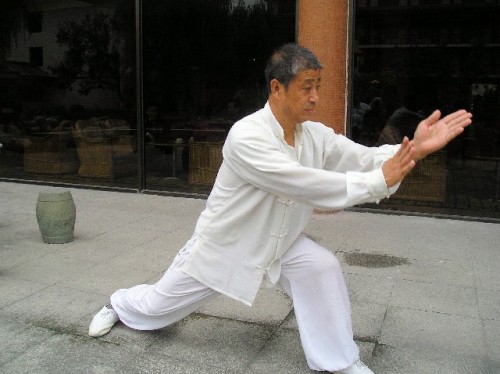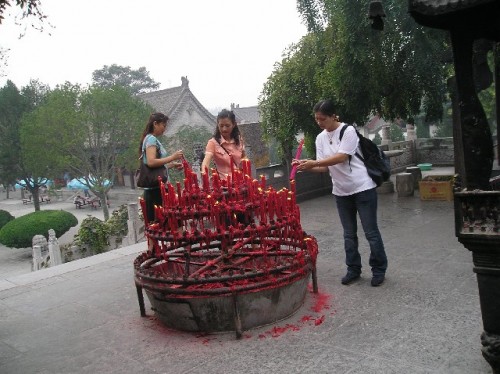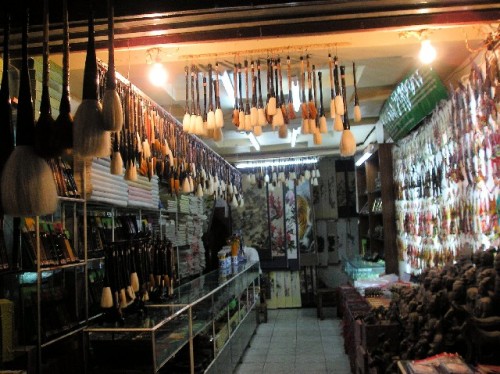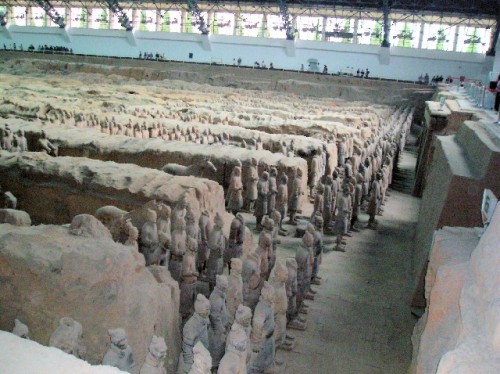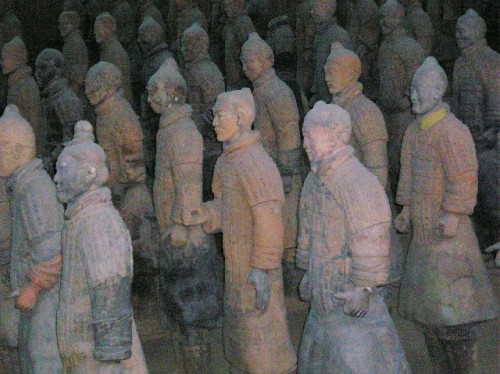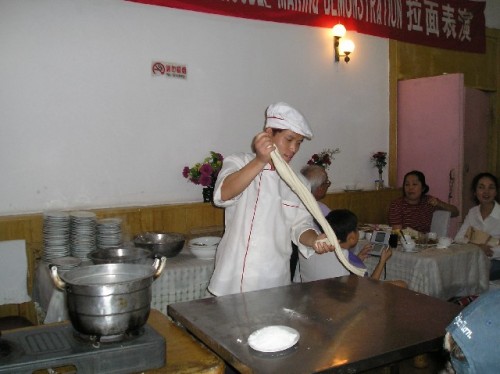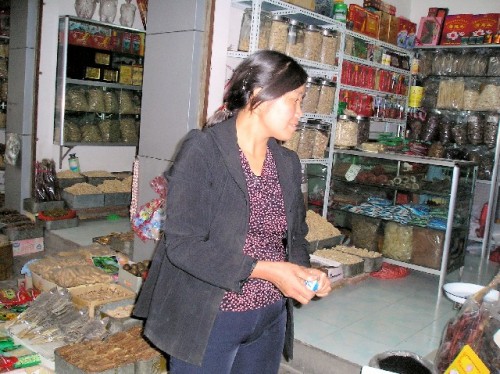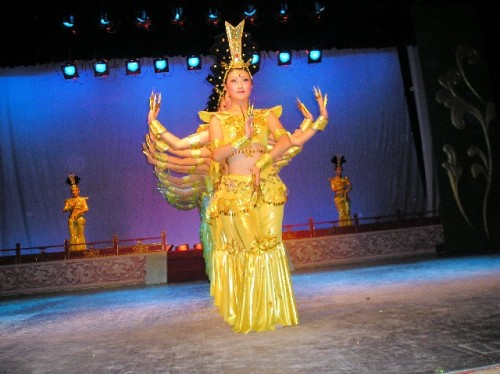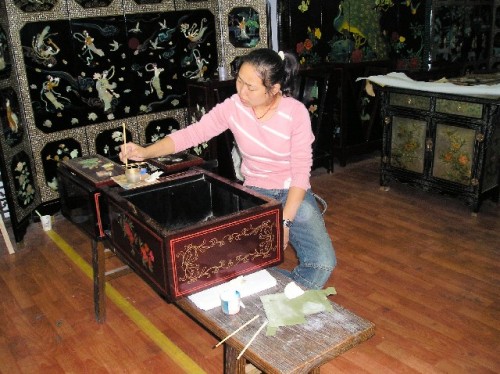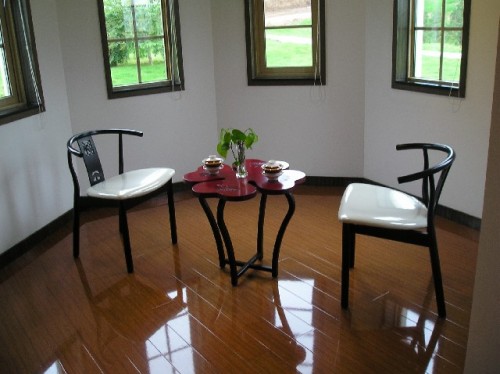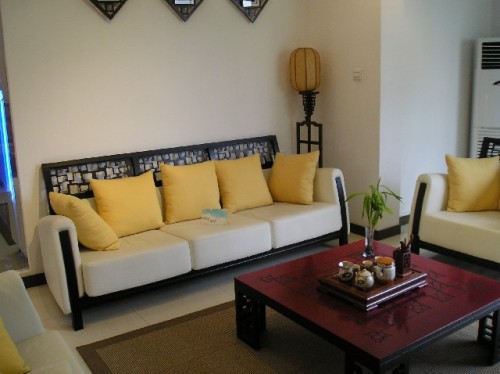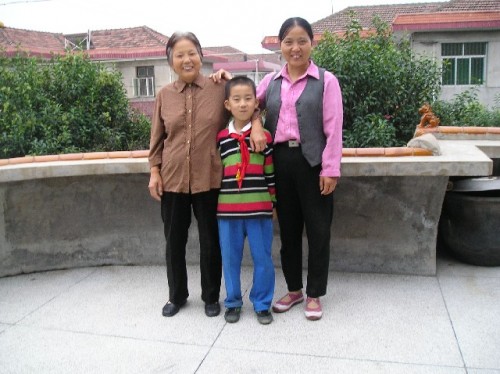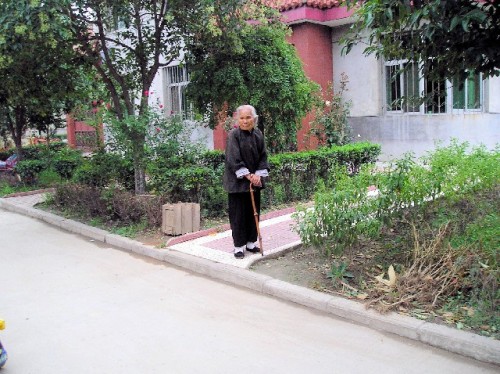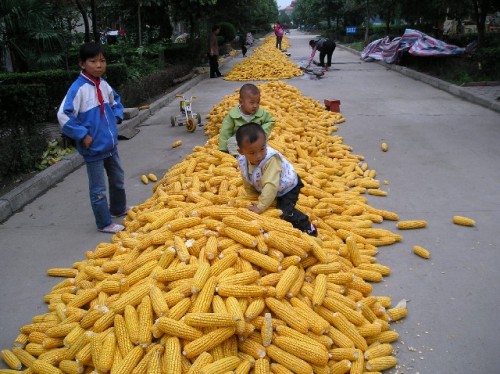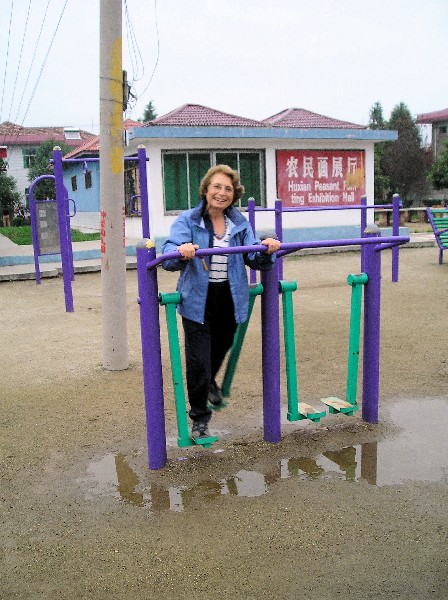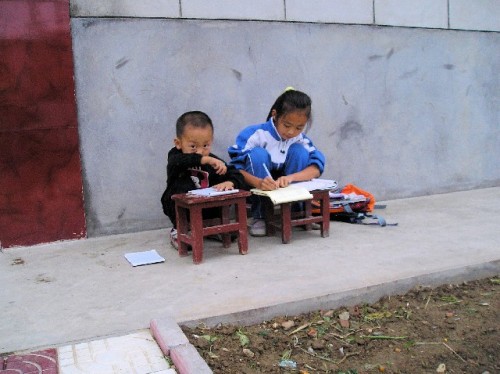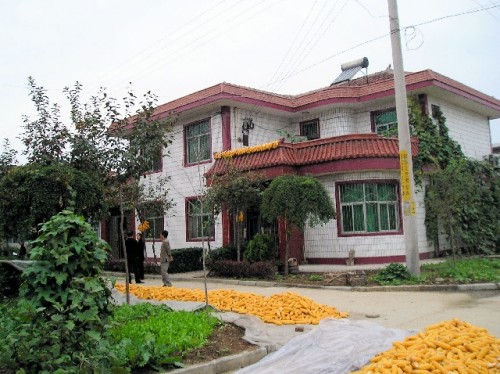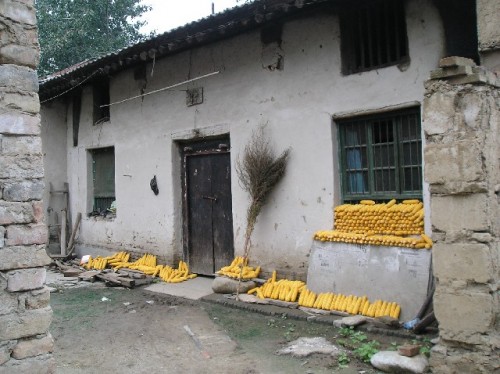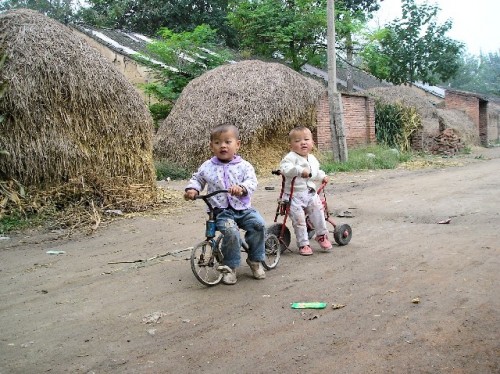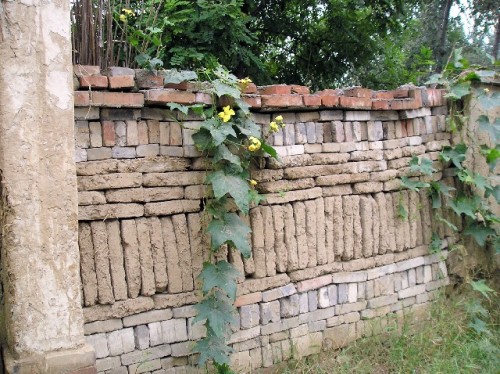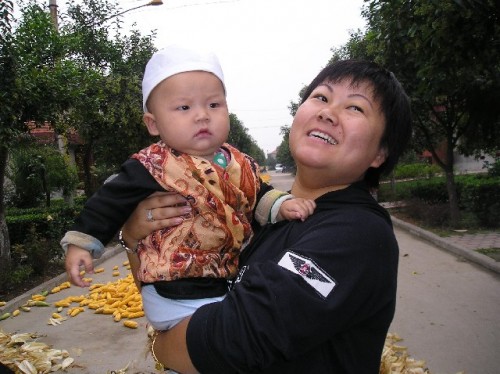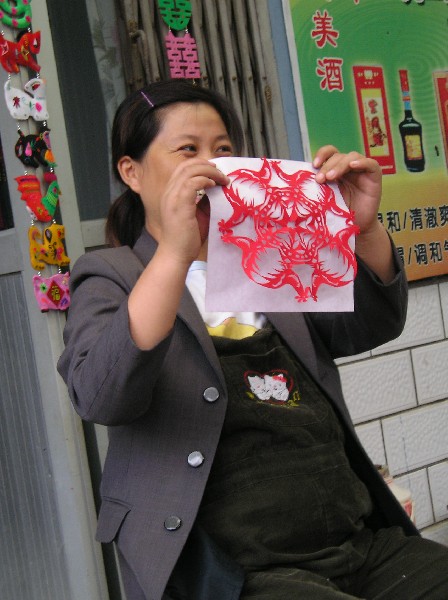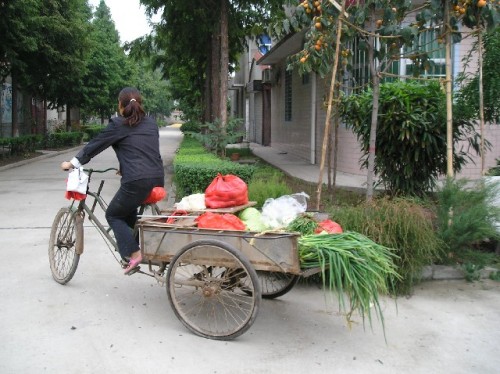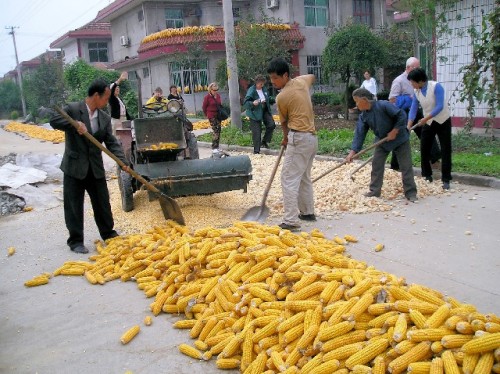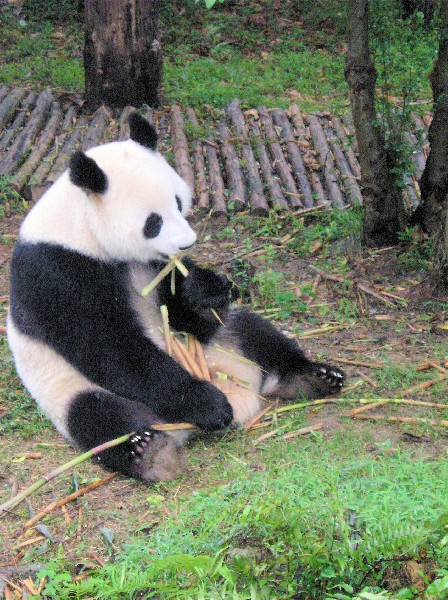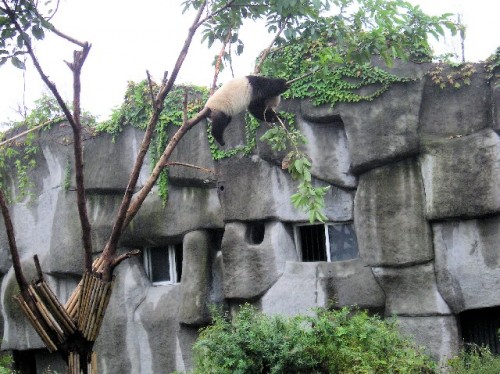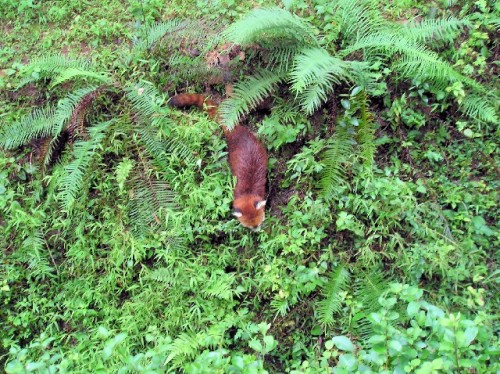Report on China: Part Three
Xian and Chengdu
By: Zeren Earls - Jun 28, 2008
Xian
When we arrived at 8 a.m. people were already returning from early morning market. The Chinese shop for food daily. We had to walk to the van, since the driver could not get near the station due to traffic. Susan cautioned us in crossing the street. "Road killers", as those learning to drive are called, do not stop for pedestrians. Xian's population is 7.2 million. A wall built during the anti-Japanese war divides it into outer and inner city built on a symmetrical grid design. There is no subway system because of the historical relics underground.
Susan looked forward to showing us her hometown, where she had also attended one of its 43 universities. Shortly after we arrived at our hotel, we participated in a tai chi demonstration by a Master, followed by a visit to the Wild Goose Pagoda. Thirty monks live in the 1100-year-old Buddhist landmark. People light incense sticks and place them in a bronze urn, sending their wishes to the gods with the rising smoke. 30% of Chinese, mostly Buddhists, practice some form of religion.
In the afternoon the Shaanxi History Museum introduced us to Xian's past as the capital of eleven dynasties and a center of Chinese civilization. As we moved through China's history, the artifacts reflected the dynasties' growing wealth. One object that intrigued me was the Reversed Flowing Pot of the Song Dynasty. The handle of the pot carefully designed and shaped is a flying phoenix, its mouth a baby lion's head. The water goes in from a small hole in the bottom and runs out the mouth without dripping when reversed. I was delighted to find a replica of this classical pale-green teapot in a shop in the city.
The evening's novelty was the visit to the Muslim market, which was lined with shops and stalls tended by vendors in white brimless hats. We stopped by a pharmacy that sold western medicine on the left side of the shop and Chinese on the right in little drawers filled with herbs. We sampled dried persimmons, roasted chestnuts, sweet cakes, sticky rice filled with bean paste, etc. The market was very crowded. Although Susan had cautioned us to be mindful of pickpockets, one person in our group fell victim to one. By the time she noticed that only the two strings of her bag were hanging from her neck, the culprit had disappeared into the crowd. We quickly exited the market.
A Mongolian hot pot dinner topped off the evening. We each received individual containers of hot broth, to select and cook from the variety of meats and vegetables that were placed in the center. We then dipped each morsel in peanut sauce before popping it into our mouths. Watermelon, apples and pomegranates completed this fun meal. Before retiring for the evening, we walked by the musical fountain near the Pagoda. Dramatically lit jets of water synchronized to western classical music and Chinese pop tunes bounced up and down and changed directions, entertaining the crowds.
On the way to the famed Terra-Cotta Army, we stopped at a jade factory. Jade is China's gold. Jade bracelets are passed on through generations. Weight, translucency, sound and intricacy of carving determine its quality. Du jade is hard; Jadeite is soft and translucent. Continuing on we passed coalmines, which are plentiful in China and provide 72% of its energy and fuel, thus causing pollution in the cities. A nice contrast was the pomegranate trees brought via the Silk Road. Blooming pomegranate is Xian's official flower.
A farmer drilling to find water discovered the Terra-Cotta Army in 1974. Pits of 6,000-plus life-sized soldiers, ranked in military order by their color patterned armor, were uncovered in vaults at the entrance to the tomb of Qin Shi Huangdi, the first Qin emperor and unifier of China. We walked along the periphery of the excavations, which were roped off from the crowds. We were able to see the soldiers with unique facial expressions, modeled on live figures, buried for immortality. The farmer who made the discovery was on hand to autograph the book Qin's Terra-Cotta Army for us.
Over lunch we enjoyed a noodle-making demonstration and went on to the wholesale herbal medicine market. Among the selections were dead ants for arthritis, fried silk worms for upset stomach, a variety of nuts for shiny hair, and turtle shells to make soup for kidney ailments. Villagers cultivate the medicines to sell to pharmacies and hospitals. The government owns the market and rents the stalls. Common belief is that Chinese medicine takes longer to take effect, but has no side effects unlike Western medicine.
Dinner at a restaurant specializing in dumplings and a folkloric show culminated our day.
We sampled every imaginable kind of dumpling in different shapes and colors, including tomato with walnuts and peas. Billed as a Tang Dynasty Show the folkloric dances accompanied by live music were exuberant and colorful. They included the Ribbon Dance, the Terra-Cotta Soldiers' Dance and a Buddhist one called the Thousand Hands.
Lacquer ware is one of China's ancient arts. When we arrived at the local factory, we had to walk around the screen in front of the entrance that kept away bad luck and kept in good fortune. There is renewed interest in traditional Chinese furniture made of rosewood and lacquer. A piece of furniture takes fifty layers of lacquer with drying time in a dark room after the first twenty. Then it is hand painted and/or inlaid with mother-of-pearl. The showroom had exquisite pieces. I purchased small silk embroidery of the Yangtze River on silk cloth displayed between two pieces of glass and framed in rosewood.
After seeing the old city wall dating from the Ming Dynasty, Susan surprised us with a visit to a model home complex in a recently developed area of Xian. A three-bedroom furnished unit we looked at was contemporary design at its best. It incorporated traditional motifs into today's aesthetics of simple clear lines. Bamboo grew in glass case room dividers; traditional flower arrangements graced the recessed walls. The bathroom floor was divided between wood slats around the sink and tiles around the bathtub. Similarly the sunroom was sectioned off with a floor of pebbles for houseplants and a wood floor for the sitting area. Soft versus hard, warm versus cold played throughout.
Our overnight stay in the farming community of Hu Xian was yet another highlight. Taking only hand luggage, we split into four groups of four to spend the night in this village of 900 people. Although our hosts did not speak English, we received a warm welcome upon arrival. Piles of yellow corn spread to be shucked blanketed the asphalt road to our hosts' home in the new section of the village renovated and sold by the government. My group stayed in a two-story house, where three generations lived: father, mother, daughter and her two children, a 15-year-old girl and an 11-year-old boy. Villagers are allowed two births. Those that exceed the limit pay a penalty of about $500.
The view from the terrace showed that corn was the lifeblood of this village. Corn was on rooftops; it hung from windows and formed mounds in doorways. Our host's house was spacious but sparsely furnished. Three bedrooms upstairs, where we stayed shared one bathroom. The beds were hard but comfortable; flax seed pillows were an adjustment. Other furnishings of note were a TV, an electronic music keyboard and a loom. For supper we rolled beans, peanuts and cauliflower in edible rice paper, followed by noodles in broth. Afterwards we went dancing in the village square with women and children. Breakfast included congee (porridge) made of corn, flat bread with onion and vegetable filling, green beans, rice, noodles and corn fritters accompanied by green tea. Susan had advised us not to finish everything on our plate, as this would indicate that we had not had enough to eat. Assuring our hosts that we were full, we strolled to the west side of the village to get a taste of the old countryside. We came upon a few bikes on dirt roads and many dilapidated houses. The once ornate front doors with guardian kings and good fortune signs showed their age through strips of peeling paint and mossy patina. Men harvested corn, while little children played in pants with split bottoms for easy squatting.
Hu Xian village is known for its farmers' paintings and for its folk art of paper cutting. Outdoor murals painted by the farmers adorn many of the buildings in the new village. We visited the studio of Pan Xiao ling, a renowned folk painter, who is also a leading force among the Peasant Artists. Her works are rich in color and depict scenes from the villagers' daily life and traditions. The one I purchased is of the Lantern Festival. At another studio we had a demonstration of paper cutting. By folding and cutting a square piece of red paper we were able to shape it into a symmetrical design. Those who learn this art at a young age acquire the dexterity required to create amazingly intricate forms out of fine paper or silk, which are sold throughout China. Loaded with these weightless treasures, we returned to Xian to catch our flight to Chengdu.
Chengdu
Known as the City of Hibiscus, Chengdu is famous for its panda bears, Sichuan food, teahouses and Changing Faces, a virtuoso performance of flipping facial masks in rapid succession. We experienced all but the pandas our first evening. The delicious but spicy meal included lotus root, fish, rice cakes with pork and a peanut dish. The teahouse was the setting for a Sichuan Opera and Folk Art Performance. Waitresses came by with long spouted teapots, filling our cups as we waited for the show to begin. Earwax cleaning and massage for pay were among perks offered to the audience during the show, which included opera, puppetry, shadow play, clowning and Changing Faces. A hand shadow transforming into a bird, cat, rabbit, horse, owl and even two roosters fighting was delightful. Actors changing characters by flipping masks and spitting fire were magical.
Open to the public since 1995, the Giant Panda Sanctuary is a 90-acre natural habitat covered with bamboo. 30% of China's pandas live here; the rest are in the wild. Pandas are born undeveloped and need a great deal attention at birth, when they are only 100 grams. They walk at three months and have a life span of 25-years. They eat mostly bamboo. We watched pandas eat, sleep, climb trees and play. Red pandas looked like raccoons. The panda is China's national treasure. People who hunt pandas are sentenced to death. After Nixon's visit in 1972, the US received pandas as a gift from China. On the way out I bought a panda hand puppet for my granddaughter Iris at the gift shop.
On the return trip to Xian, the views from the window of women weeding by the roadside, overloaded trucks, hundreds of speeding bikes, traffic police and street sweepers in orange outfits in the haze, new apartments with penthouses and rooftop plants, a block-long Wal-Mart construction, statues honoring workers and a colossal statue of Chairman Mao on a pedestal greeting people summed up this city of 4 million.

